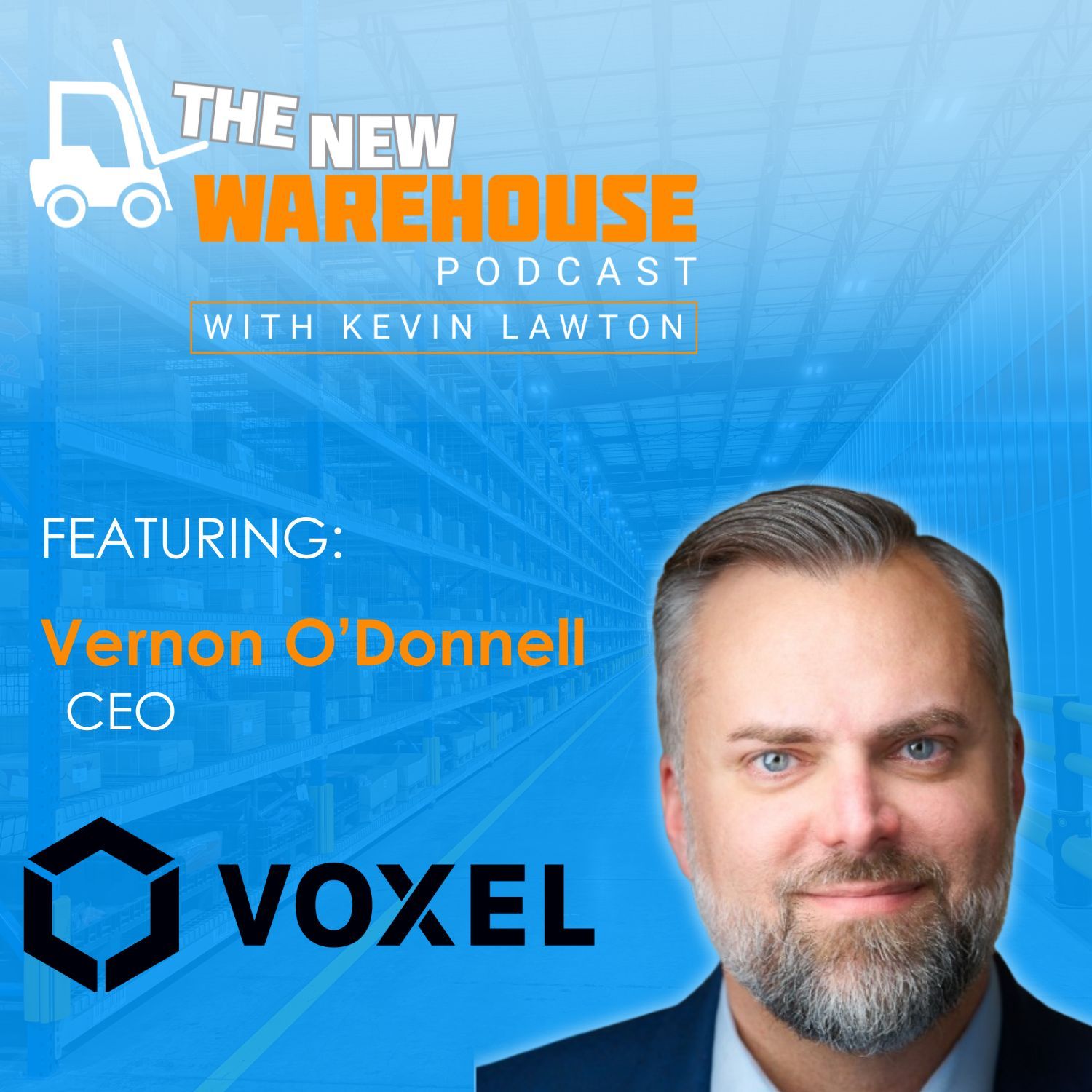
Voxel: A Collaborative Approach to Improving Warehouse Safety with AI-Powered Insight
Welcome to this special “Safety Series” episode of The New Warehouse Podcast. Kevin chats with Vernon O’Donnell, CEO of Voxel, a computer vision-based AI company transforming warehouse safety. Voxel isn’t just monitoring environments; it’s actively preventing incidents by detecting hazards in real time using existing security cameras. Vernon shares how Voxel’s solution identifies ergonomic risks, vehicle safety issues, and environmental hazards without requiring new hardware or invasive surveillance.
With a passion rooted in both professional experience and a personal connection to workplace safety, Vernon offers insights into why traditional approaches often fall short and how technology can bridge that gap. This episode builds on the key themes in our Warehouse Safety Report and demonstrates what’s possible when prevention, rather than reaction, becomes the standard.
Rethinking Warehouse Safety from the Ground Up
Most warehouse safety programs rely on outdated methods, such as clipboard observations, lagging indicators, or incident reports filed months after the fact. Vernon calls this mindset reactive, not proactive.
“We’re moving away from this anecdotal, observational, reactive, and into proactive. And the whole concept is: How do we prevent the injury from occurring?”
Voxel’s platform shifts this paradigm. By plugging into existing camera systems, even the old analog ones, it identifies patterns in real-time. Whether it’s a spike in “no stops” at a loading bay or a worker displaying poor lifting technique, Voxel alerts supervisors before these problems become injuries.
At one large grocery warehouse, what initially appeared to be a system error turned out to be a real issue, a glitch allowing forklift operators to drive up to 50% faster than intended. “They had over 2,000 incidents of speeding right away on day one,” Vernon explained. “We thought the algorithm was wrong. It wasn’t.”
Understanding the Real Risks
Voxel’s technology categorizes risks into three key areas: workers, vehicles, and the environment. Vernon shares, “Ergonomic issues are definitely the most common. They’re the most common workers’ comp claim, the most common workplace injury.”
The system identifies overreaching, improper lifting, and PPE noncompliance. But context matters. Is the worker on the second shift? Are they in a specific zone where shortcuts are common? These are the insights traditional methods miss.
On the vehicle side, near-misses are a huge red flag and one that Voxel treats as a leading indicator. The system helps companies identify and address issues such as obstructed stop signs, unclear pedestrian zones, or unsafe pallet stacking.
“You do see some pretty jarring things,” Vernon notes. Like makeshift platforms built from pallets in areas prone to musculoskeletal strain. All of it shows that problems are rarely isolated; they’re systemic.
From Improving Warehouse Safety Spend to Business Value
One of Voxel’s biggest challenges isn’t tech adoption but a change in mindset. Too often, leaders treat safety as a cost center rather than a value driver. Vernon challenges this thinking head-on. “We are having a material impact on [a major customer’s] cost per case,” Vernon explains. “It means they can start to increase salary for employees and become more competitive from a worker perspective, ’cause they’re spending less on loss. So it’s more take-home pay for the worker, less loss for the business.”
And that’s not a theoretical promise. Customers typically start seeing results within 6–8 weeks and achieve full ROI through claims reduction and fewer OSHA fines within six months. Even insurance carriers are taking notice, partnering with Voxel to improve client outcomes.
For companies with high turnover, Voxel’s solution helps managers identify patterns quickly and coach their teams more effectively. Voxel doesn’t require hours of training or daily screen time. Shift supervisors can log in for five minutes and walk into their morning huddle with targeted talking points.
“We’re even giving recommendations for their daily safety standup,” Vernon adds. This is how safety becomes a cultural norm, not just a matter of compliance.
Key Takeaways on Improving Warehouse Safety
- Voxel leverages your existing camera infrastructure, requiring no new hardware, to deliver real-time safety insights using AI-powered computer vision.
- The system identifies and trends ergonomic risks, vehicle near-misses, and PPE violations, providing leaders with precise data by shift, zone, and frequency to guide effective interventions.
- One major grocer uncovered a system flaw that allowed forklifts to exceed speed limits by 50%, identifying over 2,000 violations on the first day.
- Clients typically see ROI in under six months, including reduced OSHA fines, fewer injury claims, improved retention, and better insurance positioning.
- Improving warehouse safety becomes a strategic advantage by freeing up capital, reducing liability, and improving performance across the board. By lowering injury-related costs, companies can reinvest in higher wages and retention strategies, making them more competitive in today’s tight labor market.
Listen to the episode below and leave your thoughts in the comments.
Guest Information
For more information on Voxel, click here.
To connect with Vernon on LinkedIn, click here.
For more information on how Voxel is improving warehouse safety, check out the content below.
Verst Logistics Cut Vehicle and Ergonomic Incidents in Under 6 Months
Americold Saved $1.1M Annually and Reduced Injuries By 77%
Introducing Actions: Closing the Gap Between Safety Detection & Resolution
